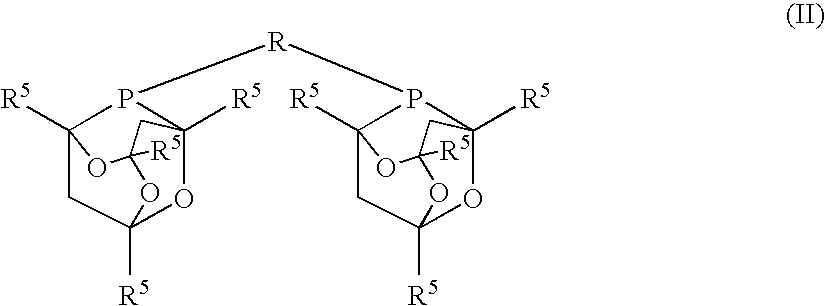Process for the production of primary alcohols
a technology for producing primary alcohols and alcohols, applied in the direction of physical/chemical process catalysts, organic compounds/hydrides/coordination complex catalysts, metal/metal-oxide/metal-hydroxide catalysts, etc., can solve the problems of not producing high yields of primary alcohols, not commercially viable to produce primary alcohol directly, and not producing primary alcohols. high yield
- Summary
- Abstract
- Description
- Claims
- Application Information
AI Technical Summary
Benefits of technology
Problems solved by technology
Method used
Image
Examples
examples 1-5
[0111]Examples 1-5 were carried out in a 250 ml magnetically stirred batch autoclave. The autoclave was charged with 30 ml of secondary alcohol or ketone (the type of alcohol / ketone used in each Example is shown in Table 1 below), a stoichiometric excess of acid over palladium (the type of acid and amount of acid used in each Example is shown in Table 1 below), 10 ml sulfolane, 0.25 mmol of palladium(II) acetylacetonate, 0.4 mmol of 1,2-bis(1,4-cyclooctylenephosphino)ethane and 0.1 mmol HCl. After being flushed with carbon monoxide, the autoclave was pressurized with carbon monoxide and hydrogen to a partial pressure of 20 bar and 40 bar, respectively. Subsequently, the reactor was sealed and the contents were allowed to react for 5 hours at 160° C. After cooling, a sample was taken from the contents of the reactor and analysed by Gas Liquid Chromatography. The results are given in Table 1 below. MSA is an abbreviation for methanesulphonic acid. PA is an abbreviation for phosphoric ...
PUM
| Property | Measurement | Unit |
|---|---|---|
| pKa | aaaaa | aaaaa |
| pKa | aaaaa | aaaaa |
| pKa | aaaaa | aaaaa |
Abstract
Description
Claims
Application Information
 Login to View More
Login to View More - R&D
- Intellectual Property
- Life Sciences
- Materials
- Tech Scout
- Unparalleled Data Quality
- Higher Quality Content
- 60% Fewer Hallucinations
Browse by: Latest US Patents, China's latest patents, Technical Efficacy Thesaurus, Application Domain, Technology Topic, Popular Technical Reports.
© 2025 PatSnap. All rights reserved.Legal|Privacy policy|Modern Slavery Act Transparency Statement|Sitemap|About US| Contact US: help@patsnap.com


